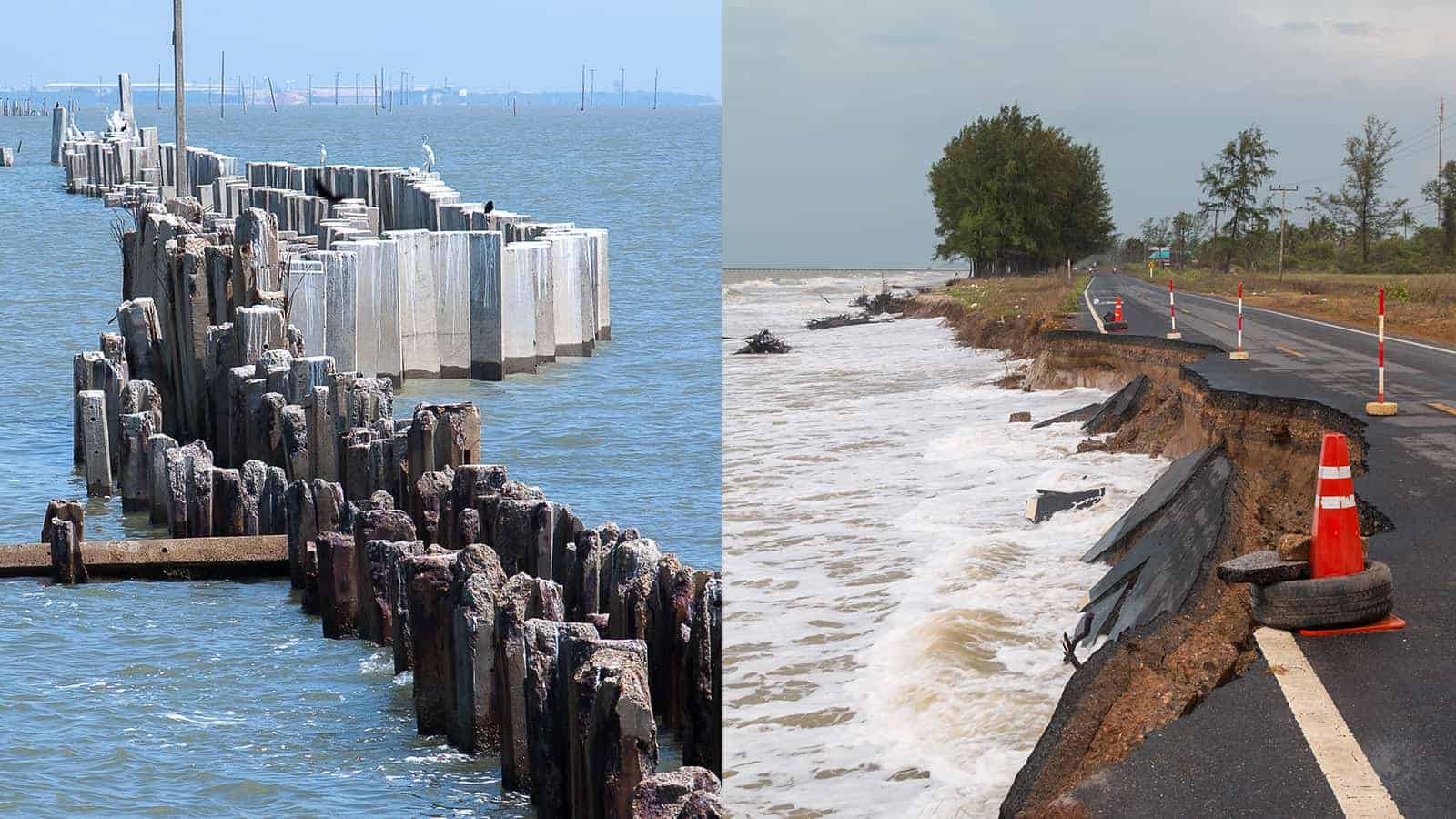A study found that if greenhouse gas emissions continue at the current pace, sea levels could rise 15 inches by 2100. More than 60 ocean, ice, and atmosphere scientists worldwide from 36 international institutions contributed to the research. Their new estimates revealed that Greenland and Antarctica’s ice sheets alone could cause this surge in sea levels. Furthermore, this doesn’t even account for the global sea-level rise already set in motion by Earth’s warming climate.
This study’s results align with projections made by the Intergovernmental Panel on Climate Change’s (IPCC) 2019 Special Report on Oceans and the Cryosphere. Scientists estimated that Greenland would contribute 3.1 to 10.6 inches to global sea-level rise in this century. They projected that Antarctica’s ice sheets could add 1.2 to 11 inches to sea levels. Overall, melting ice sheets cause around a third of the global sea-level rise.
The study results
The results from this study have been published in an issue of the journal The Cryosphere. The data came from the Ice Sheet Model Intercomparison Project (ISMIP6) led by NASA’s Goddard Space Flight Center in Greenbelt, Maryland. NASA satellite observations keep track of changing sea levels from space and use this data to estimate impacts on melting ice sheets. They also hope to gain more insight into the causes of retreating ice sheets and ways to adapt to climate change.
“One of the biggest uncertainties when it comes to how much sea level will rise in the future is how much the ice sheets will contribute,” said project leader and ice scientist Sophie Nowicki. “And how much the ice sheets contribute is really dependent on what the climate will do.”
“The strength of ISMIP6 was to bring together most of the ice sheet modeling groups around the world, and then connect with other communities of ocean and atmospheric modelers as well, to understand better what could happen to the ice sheets,” said Heiko Goelzer, a scientist at NORCE Norwegian Research Centre in Norway. Goelzer was the lead scientist for the Greenland ice sheet research.
Greenhouse gas emissions will determine the sea-level rise.
Both warming air temperatures and increasing ocean temperatures have caused Greenland’s ice sheet to melt rapidly. As a result, it contributes greatly to global sea-level rise. However, just how much it will rise depends on the carbon emissions level being released into the atmosphere. The ISMIP6 team investigated two different scenarios set for the IPCC’s future climate to estimate sea-level rise by 2100. In the first one, emissions keep increasing rapidly, and in the second, emissions have been dramatically decreased.
Greenland ice sheet
In this scenario, they found that the Greenland ice sheet would cause an additional global sea-level rise of about 3.5 inches by 2100. With lower emissions, the retreating ice sheet would only raise global sea levels by about 1.3 inches. Remember that these estimates don’t include ice already lost due to warming temperatures between pre-industrial times and now. Prior studies estimated that the Greenland ice sheet would add around a quarter-inch sea-level rise by 2100 due to this factor alone.
Antarctica ice sheet
The ISMIP6 team also analyzed the Antarctic ice sheet to estimate how much it would impact sea level rise. (Remember that this amount doesn’t include sea-level rise set in motion already by warming temperatures). Scientists say they have a harder time estimating future ice loss from this ice sheet due to several reasons. In the west, warm ocean currents cause erosion on the bottom of large floating ice shelves, resulting in a loss. However, on the eastern side, the ice sheet often gains mass due to increased snowfall resulting from warmer air temperatures.
This means that a greater range of possibilities could happen. But that depends on how this ice sheet reacts to the changing climate. Their research reveals that extreme ice sheet fluctuations could decrease sea levels by 3.1 inches or increase it by up to 12 inches. As we said, this all depends on the climate and greenhouse gas emissions in the future. However, the climate model projections show the most severe loss in the West Antarctica ice sheet. In the warmest climate conditions, it causes up to 7.1 inches of sea-level rise by 2100.
What the researchers say about the sea level rise
“The Amundsen Sea region in West Antarctica and Wilkes Land in East Antarctica are the two regions most sensitive to warming ocean temperatures and changing currents, and will continue to lose large amounts of ice,” said Hélène Seroussi, an ice scientist at NASA’s Jet Propulsion Laboratory in Southern California. Seroussi led the Antarctic ice sheet research.
“With these new results, we can focus our efforts in the correct direction and know what needs to be worked on to continue improving the projections.”
Various groups within the ISMIP6 community contribute to different aspects of the ice sheet modeling research. The models help them better understand why the ice sheets have changed and improved estimates on sea-level rise.
“It took over six years of workshops and teleconferences with scientists from around the world working on the ice sheet, atmosphere, and ocean modeling to build a community that was able to ultimately improve our sea-level rise projections,” Nowicki said. “The reason it worked is because the polar community is small, and we’re all very keen on getting this problem of future sea-level right. We need to know these numbers.”
The new results will help scientists gather data for the Sixth IPCC report scheduled for release in 2022.
 Final thoughts on the study that showed sea levels could rise 15 inches by 2100
Final thoughts on the study that showed sea levels could rise 15 inches by 2100
New data and climate modeling systems have shown that sea levels could rise by 15 inches by 2100. 60 scientists from all over the world have contributed to the research, using advanced climate technology and satellite imagery.
The greenhouse gas emissions rates in the future will greatly determine the sea level rise globally. If we keep emissions low, sea levels won’t increase but a few inches. However, under the highest emissions scenario with a very warm climate, we could see 15 inches of sea-level rise by the end of the century.



















